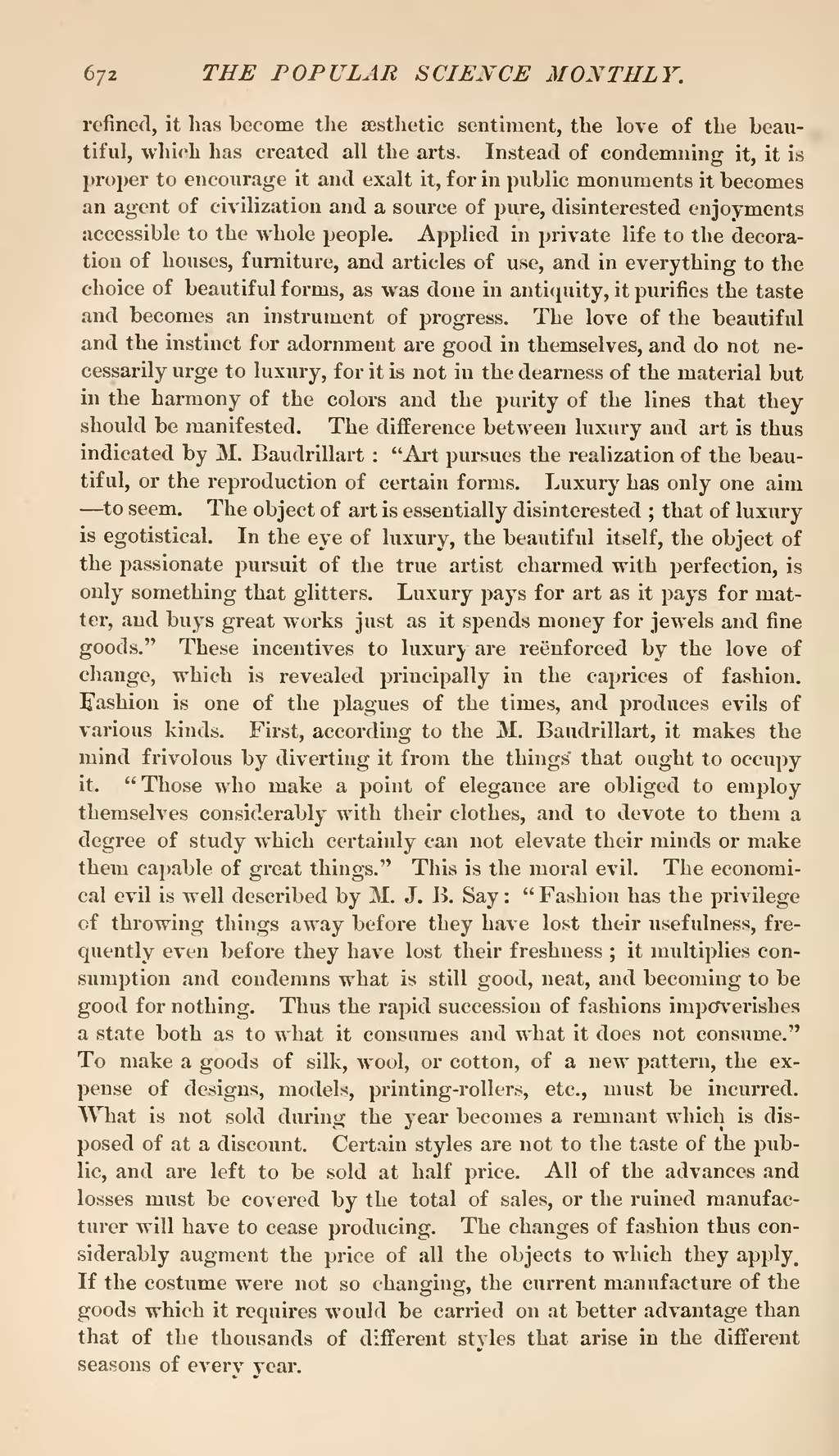refined, it has become the æsthetic sentiment, the love of the beautiful, which has created all the arts. Instead of condemning it, it is proper to encourage it and exalt it, for in public monuments it becomes an agent of civilization and a source of pure, disinterested enjoyments accessible to the whole people. Applied in private life to the decoration of houses, furniture, and articles of use, and in everything to the choice of beautiful forms, as was done in antiquity, it purifies the taste and becomes an instrument of progress. The love of the beautiful and the instinct for adornment are good in themselves, and do not necessarily urge to luxury, for it is not in the dearness of the material but in the harmony of the colors and the purity of the lines that they should be manifested. The difference between luxury and art is thus indicated by M. Baudrillart: "Art pursues the realization of the beautiful, or the reproduction of certain forms. Luxury has only one aim—to seem. The object of art is essentially disinterested; that of luxury is egotistical. In the eye of luxury, the beautiful itself, the object of the passionate pursuit of the true artist charmed with perfection, is only something that glitters. Luxury pays for art as it pays for matter, and buys great works just as it spends money for jewels and fine goods." These incentives to luxury are reënforced by the love of change, which is revealed principally in the caprices of fashion. Fashion is one of the plagues of the times, and produces evils of various kinds. First, according to the M. Baudrillart, it makes the mind frivolous by diverting it from the things that ought to occupy it. "Those who make a point of elegance are obliged to employ themselves considerably with their clothes, and to devote to them a degree of study which certainly can not elevate their minds or make them capable of great things." This is the moral evil. The economical evil is well described by M. J. B. Say: "Fashion has the privilege of throwing things away before they have lost their usefulness, frequently even before they have lost their freshness; it multiplies consumption and condemns what is still good, neat, and becoming to be good for nothing. Thus the rapid succession of fashions impoverishes a state both as to what it consumes and what it does not consume." To make a goods of silk, wool, or cotton, of a new pattern, the expense of designs, models, printing-rollers, etc., must be incurred. What is not sold during the year becomes a remnant which is disposed of at a discount. Certain styles are not to the taste of the public, and are left to be sold at half price. All of the advances and losses must be covered by the total of sales, or the ruined manufacturer will have to cease producing. The changes of fashion thus considerably augment the price of all the objects to which they apply. If the costume were not so changing, the current manufacture of the goods which it requires would be carried on at better advantage than that of the thousands of different styles that arise in the different seasons of every year.
Page:Popular Science Monthly Volume 18.djvu/690
Appearance

